
+91 8095511877

+91 8095511877
Kyphoplasty surgery helps to correct kyphosis. Kyphosis is an abnormal forward bend in the spine, making it look more rounded than normal. While looking at a normal spine from the side, it will have a mild ‘s’ shaped curve.
The standard forward bend of the thoracic spine is around forty degrees. If this bend is more than fifty degrees, you have kyphosis. It may be present at birth or develop later on.
The most common cause of kyphosis is poor posture during childhood. Girls are more likely to have the condition than boys. In adults, osteoporosis and spine fracture are common causes.
Mild forms of kyphosis will not need treatment. Medicines and physical therapy are the most common treatment for the condition.
You need a Kyphoplasty if the curvature of your thoracic spine is more than eighty degrees. It involves the trimming of vertebrae or osteotomy and spinal fusion surgery to make the spine stable.
The duration of the surgery will be around 4 to 5 hours. You will be in the hospital for 5 to 7 days. Complete recovery will take about a few weeks.
Types and causes of kyphosis
There are three main types of kyphosis. These are
1. Postural kyphosis- This is the most common type and occurs in girls more than in boys. The condition does not get worse with time. Symptoms are usually mild and easily controllable.
2. Scheuermann’s kyphosis- It usually occurs in the teenage years. The curvature is due to the abnormal shape of the vertebrae. In essence, more than three adjacent vertebrae form a wedge of more than five degrees in the front. The vertebrae will have the shape of a triangle than the usual rectangle. The cause is mostly unknown.
3. Congenital kyphosis- It is present at birth and is the least common type. Abnormal development of the vertebrae and the spine is the cause.
Kyphosis occurs in adults due to many causes. In most, there is a thinning of the front portion of the vertebrae. It leads to the collapse of the vertebrae increasing the forward bend of the spine. Osteoporosis is the most common cause and leads to compression fractures of the spine.
Some of the other common causes in adults are arthritis and infections or tumors of the spine. Ankylosing spondylitis where there is a fusion of the vertebrae is another one.
If you have kyphosis, your doctor will suggest physical therapy and medicines to help control the symptoms. If you do not get relief even after months of treatment, you need to think of surgery.
Before having the surgery, your surgeon will look into the following;
The severity and location of the curve- You may have surgery if the curvature in the thoracic spine is more than eighty degrees. In the lumbar spine, this will be sixty degrees.
Your body balance- Bending of the upper body too much can create an imbalance in posture. If this affects your daily life, surgery is an option.
The development of the curve- If your kyphosis is increasing rapidly, you need to have surgery at the earliest.
Problems with spinal nerves- Kyphosis can affect your spinal nerves, especially if it is due to compression fractures. These trap your spinal nerves to cause various problems like pain, numbness, weakness, etc. in some areas. Bowel and bladder dysfunction due to spinal nerve problems needs emergency surgery.
Kyphosis surgery aims to reduce deformity as well as to reduce pain and other symptoms. Another goal is to prevent the condition from getting worse.
Before having the surgery, the surgeon will want you to have a few tests. These include X-rays, CT, and MRI scans of the spine. These will give a clear picture of your spine from various sides and the degree of curvature. If you have problems with spinal nerves, it will also show in the images.
You will have a full-body check-up to assess your fitness for surgery. You should not have any serious problems with your hearts and lungs, as well as bleeding disorders.
You need to stop medicines like blood thinners before surgery. Some herbal supplements and vitamin preparations can also cause more bleeding during surgery. You need to stop these as well.
Starting a healthy diet weeks before surgery will help you to recover faster. So pack your diet with lots of proteins, minerals, and vitamins.
A spine-surgery will restrict your movements for a few weeks. You will have to be away from the office for four to five weeks. At home, you will need help with most of your daily activities for a few days. You need to make arrangements in this regard as well.
You will need to be in the hospital on the day before or on the day of surgery.
You will have general anesthesia during the operation. Your surgeon will either do open surgery or a minimally invasive surgery depending on your condition.
In open surgery, the incision will be a long one to expose the vertebrae. The surgeon will approach the spine from the back(posterior approach) or the front (anterior approach).
In a minimally invasive surgery, there will only two or three small incisions. The surgeon will insert a small video microscope through one to the incisions to have a clear view of the area. Through the other incision, the surgeon will introduce a tubular retractor to move the muscles and ligaments away. It creates a tunnel for the surgical instruments to reach the spine.
The first step of the surgery is an osteotomy to reshape the vertebrae by trimming the surface. The surgeon will make the base and top of the vertebrae flat so that the front and back ends are level. He or she will then remove your damaged intervertebral discs and align the vertebrae with hooks.
The next step of surgery is a spinal fusion to give stability to your spine. During this, your surgeon will place bone grafts in between the vertebrae. Once the grafts are in place, the surgeon will use metal plates and screws to secure it. After withdrawing the retractor, the surgeon will move the muscles and ligaments to its original place.
After some time, the bone grafts will fuse the vertebrae to make it a single unit. It prevents the vertebrae from moving to make your spine stable and straight.
The surgeon will then close the incisions with sutures or staples.
At hospital
You will be back in your hospital room once the effects of anesthesia wear off. If you have pain, pain killers will reduce it. The surgeon may put a back brace to support the spine for a few days.
On the day after the operation, your doctor will ask you to get up from the bed and sit on a chair. You will also have to walk a few steps inside the room. It helps to improve your circulation and speed up your recovery. Moving your legs will also prevent blood clots in the legs. The next day you will walk in the corridors as well as climb a few steps.
Physical therapy will also start while you are in hospital. It helps to strengthen the muscles in your back and to make your spine flexible.
You will go back home after five or six days.
At home
You will have to take rest as well as do the necessary physical exercises at intervals. But avoid bending or twisting your spine for a few weeks till it is stable.
Proper wound care, like keeping it clean and dry is vital for faster healing.
You should not lift anything heavy for a few weeks. Try to avoid straining while passing stools as it puts pressure on the spine. Use laxatives if necessary.
You will be able to return to normal activities slowly in three or four weeks. If your office work is not strenuous, you can join back in four to five weeks. Complete recovery will take three to four months.
Some of the risks and complications of kyphosis correction surgery are
Very rarely, the operation may fail to provide relief from symptoms


This article has been reviewed for medical correctness and relevance by
Dr Srinivasa N
Dr. Srinivasa. N is an an accomplished orthopaedic spine surgeon offering highest standard of care to patients affected with spinal disorders. He is currently working as a consultant spine surgeon at Tejasvini hospital,Mangalore, Karnataka. His areas of expertise include endoscopic spine surgeries, spinal decompression and fusion surgeries, surgeries for scoliosis andkyphosis, vertebroplasty
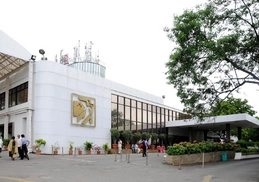
Apollo Health City
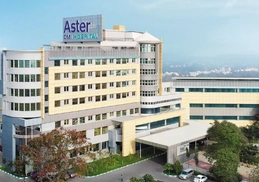
Aster CMI
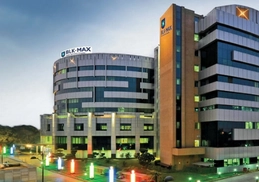
BLK Hospital
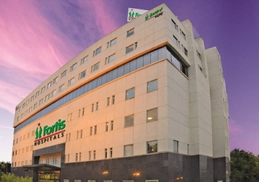
Fortis Bangalore

Fortis Memorial Research Institute(FMRI)
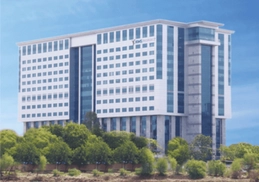
KIMS Hospital Hyderabad
Frequently Asked Questions
Do I need surgery for kyphosis?
What are the common types of kyphosis surgery?
Is kyphosis surgery painful?
How much does kyphoplasty cost?